Dominique Luchart's Blog, page 637
May 1, 2021
Lego offers sweet Star Wars deals for May the Fourth, ,
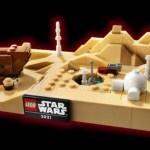
As “Star Wars” fans worldwide gear up for the “May the Fourth” franchise celebration, Lego has a few coming deals to showcase its new sets.
The building toymaker recently released a $200 R2-D2 model, a $70 Darth Vader helmet, a $50 Scout Trooper helmet and a $60 Imperial Droid, adding on to an ever-growing list of dozens of “Star Wars” products. And there are even more deals coming in time for the celebration this week.
Lego’s “Star Wars” event page notes that VIP members of Lego — you can join the program for free — will receive double points on all Lego “Star Wars” purchases between Saturday (May 1) and Wednesday (May 5).
Related: The best Star Wars Lego sets of 2021: Great deals and more
[image error]
Lego R2-D2. $199.99 at Lego.com
This epic Lego R2-D2 droid set is definitely the droid your looking for to complete your Star Wars collection this year. With 2,314 pieces, R2-D2 stands over 12 inches high! View Deal
VIP members can also enter a sweepstakes for a one-of-a-kind Lego “Star Wars” collectible featuring Jon “Dutch” Vander, one of the Rebel test pilots in Gold Squadron who died during the successful attempt to blow up the Death Star in “Star Wars: A New Hope” (1977).
If it’s safe enough for you to visit a Lego store in person, the toymaker is trying to make it worth the effort for “Star Wars” fans. Between May 1 and May 5, anyone who spends more than $40 in-person on Lego “Star Wars” stuff will receive a free Imperial shuttle. That certainly won’t be hard to do with any of the new sets listed above.
[image error]
Get a free Lego Star Wars Imperial Shuttle with a purchase of at least $40 this Star Wars Day. (Image credit: Lego )If you’re willing to spend more than $85 in-person or online, “Star Wars” fans can receive a free Tatooine homestead, as long as the purchase comes between May 1 and May 5. That’s the famous homestead of Luke Skywalker’s family at the beginning of “A New Hope” — remember the double-sunset scene? — which is also featured in the prequel series (1999 to 2005) and at the end of the sequel series (2015 to 2019).
Also make sure to look at Space.com’s “Star Wars” Lego page for more information about sets we recommend buying.
Follow Elizabeth Howell on Twitter @howellspace. Follow us on Twitter @Spacedotcom and on Facebook.
Join our Space Forums to keep talking space on the latest missions, night sky and more! And if you have a news tip, correction or comment, let us know at: community@space.com.
The post Lego offers sweet Star Wars deals for May the Fourth, , appeared first on NEWDAWN Blog.
April 30, 2021
Today I learned that card grading companies are drowning in Pokémon cards, Mitchell Clark
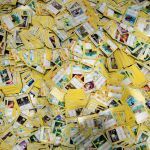
 BRENDAN SMIALOWSKI/AFP via Getty Images
BRENDAN SMIALOWSKI/AFP via Getty ImagesA report from Vice has opened my eyes to just how big the Pokémon trading card collecting market is getting — apparently to the point where card rating companies have waitlists that range from six to ten months, with one company claiming it’s receiving over 500,000 cards to grade per week. The card graders, who rate trading cards’ conditions to determine how collectable (and therefore valuable) they are, are so swamped that people who want to get their Magic, Yu-Gi-Oh, or sports cards graded are also having to wait in line (or pay out the nose to skip it).
One card rating company apparently needed employees so bad it offered $1,000 starting bonuses — and then bumped them up to $2,500. Another company had to buy two warehouses to store…
The post Today I learned that card grading companies are drowning in Pokémon cards, Mitchell Clark appeared first on NEWDAWN Blog.
Today I learned that card grading companies are drowning in Pokemon cards,
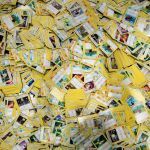
A report from Vice has opened my eyes to just how big the Pokemon trading card collecting market is getting — apparently to the point where card rating companies have waitlists that range from six to ten months, with one company claiming it’s receiving over 500,000 cards to grade per week. The card graders, who rate trading cards’ conditions to determine how collectable (and therefore valuable) they are, are so swamped that people who want to get their Magic, Yu-Gi-Oh, or sports cards graded are also having to wait in line (or pay out the nose to skip it).
One card rating company apparently needed employees so bad it offered $1,000 starting bonuses — and then bumped them up to $2,500. Another company had to buy two warehouses to store all the cards it was getting in. Apparently, even the the most basic original Pokemon cards can fetch upwards of $40 now in excellent condition, and graded cards can be worth up to 20 times their value in perfect condition.
Of course, we’ve also seen the boom affecting the market in other ways– eBay is adding a feature to its app specifically to scan cards and pre-populate listings with info (though not the card’s condition), making it slightly faster to list them. The Vice report also mentions that plastic card protectors have been completely selling out.
Most of these effects seem linked to older Pokemon cards, as they’re the ones that are scarce — as the author of the Vice article points out, people are looking to see if they’ve got any that escaped the ravages of being childhood playthings after seeing collectors like Logan Paul buying original cards or packs for obscenely high prices.
But it also seems like some of the OG Pokemon shine has started to affect the market for new collectibles with unproven value, too: some Target stores have threatened to call police on people camping outside for new Pokemon card restocks, and the Pokemon card company has rushed to pump out as many new cards as it can.
Maybe the pandemic has awoken people’s inner magpies, turning on an insatiable desire to collect without really considering the value of what we’re buying (just look at NFTs, which feel like peak collectible). Of course, there are also those truly rare Pokemon cards that are quite valuable — but it can’t just be the rare cards hitting these card rating companies with, as one CEO put it, “an avalanche of cardboard.”
Honestly, seeing this news, on top of everything else, has left me with one burning question: where the heck are people getting so much money that they can spend $660K on a Mario cartridge or $300K on a Pokemon card?
The post Today I learned that card grading companies are drowning in Pokemon cards, appeared first on NEWDAWN Blog.
This world-ending asteroid is the perfect vehicle for Pink Floyd,
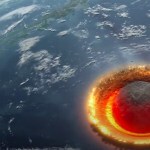
If you’d like a visual of one way that doom could overtake Earth almost immediately, then YouTube user Anselo La Manna has just the video for you: a large asteroid impact simulation scored to nothing other than Pink Floyd.
Specifically, that’s “Great Gig in the Sky,” off what might be the band’s most beloved and over-analyzed album, Dark Side of the Moon. It’s got everything total annihilation needs: contemplative piano, pedal steel guitar, and of course, a plaintive wail, capturing the whole range of emotions that people might feel if they were burned to a crisp because one big rock hit another.
Anselo La Manna also hosts the original clip the mashup video uses on their YouTube page, a simulation of a large asteroid impact. It appears to be from Miracle Planet, a documentary series that aired on the Discovery Channel. For comparison, our last brush with a potential asteroid-based death in 2020 was neither deadly nor exceptionally exciting. The asteroid missed us, and was only about the size of a smart car in the first place.
You could quibble that this video isn’t synced perfectly (the vocals could come in right on impact), or that it might not compare to playing Dark Side of the Moon with the Wizard of Oz. But it captures the timeless quality of the end of the world perfectly, in my opinion.
We all dread it, but on a Friday, at least the weekend’s right around the corner.
 Suspiciously, Big Ben is somehow still standing in the aftermath of the asteroid’s impact.
Suspiciously, Big Ben is somehow still standing in the aftermath of the asteroid’s impact. The post This world-ending asteroid is the perfect vehicle for Pink Floyd, appeared first on NEWDAWN Blog.
This world-ending asteroid is the perfect vehicle for Pink Floyd, Ian Carlos Campbell
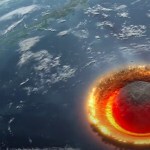
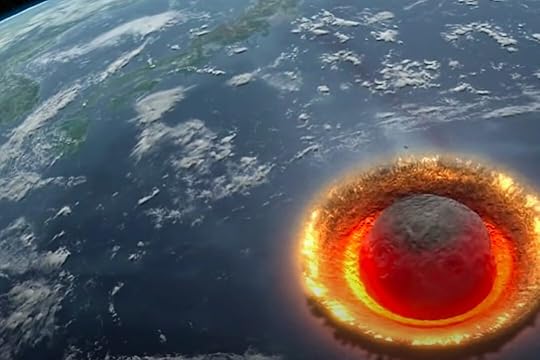
If you’d like a visual of one way that doom could overtake Earth almost immediately, then YouTube user Anselo La Manna has just the video for you: a large asteroid impact simulation scored to nothing other than Pink Floyd.
Specifically, that’s “Great Gig in the Sky,” off what might be the band’s most beloved and over-analyzed album, Dark Side of the Moon. It’s got everything total annihilation needs: contemplative piano, pedal steel guitar, and of course, a plaintive wail, capturing the whole range of emotions that people might feel if they were burned to a crisp because one big rock hit another.
Anselo La Manna also hosts the original clip the mashup video uses on their YouTube page, a simulation of a large asteroid impact. It appears…
The post This world-ending asteroid is the perfect vehicle for Pink Floyd, Ian Carlos Campbell appeared first on NEWDAWN Blog.
Solar System Planets: Order of the 8 (or 9) Planets, ,
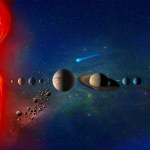
Ever since the discovery of Pluto in 1930, kids grew up learning that the solar system has nine planets. That all changed in the late 1990s, when astronomers started arguing about whether Pluto was indeed a planet. In a highly controversial decision, the International Astronomical Union ultimately decided in 2006 to designate Pluto as a “dwarf planet,” reducing the list of the solar system’s true planets to just eight.
Astronomers, however, are still hunting for another possible planet in our solar system, a true ninth planet, after mathematical evidence of its existence was revealed on Jan. 20, 2016. The alleged “Planet Nine,” also called “Planet X,” is believed to be about 10 times the mass of Earth and 5,000 times the mass of Pluto.
Related: The Evidence for ‘Planet Nine’ in Our Solar System (Gallery)
The order of the planets in the solar system, starting nearest the sun and working outward is the following: Mercury, Venus, Earth, Mars, Jupiter, Saturn, Uranus, Neptune and then the possible Planet Nine.
If you insist on including Pluto, it would come after Neptune on the list. Pluto is truly way out there, and on a wildly tilted, elliptical orbit (two of the several reasons it was demoted).
The planets: The many worlds of our solar systemThe inner four planets closest to the sun — Mercury, Venus, Earth and Mars — are often called the “terrestrial planets” because their surfaces are rocky. Pluto also has a rocky, albeit frozen, surface but has never been grouped with the four terrestrials.
The four large outer worlds — Jupiter, Saturn, Uranus and Neptune — are sometimes called the Jovian or “Jupiter-like” planets because of their enormous size relative to the terrestrial planets. They’re also mostly made of gases like hydrogen, helium and ammonia rather than of rocky surfaces, although astronomers believe some or all of them may have solid cores. Jupiter and Saturn are sometimes called the gas giants, whereas the more distant Uranus and Neptune have been nicknamed the ice giants. This is because Uranus and Neptune have more atmospheric water and other ice-forming molecules, such as methane, hydrogen sulfide and phosphene, that crystallize into clouds in the planets’ frigid conditions, according to the Planetary Society. For perspective, methane crystallizes at minus 296 Fahrenheit (minus 183 degrees Celsius), according to the U.S. National Library of Medicine.
What is (and isn’t) a planet?The IAU defines a true planet as a body that circles the sun without being some other object’s satellite; is large enough to be rounded by its own gravity (but not so big that it begins to undergo nuclear fusion, like a star); and has “cleared its neighborhood” of most other orbiting bodies. Yeah, it’s a mouthful.
But that restrictive definition helped isolate what should and should not be considered a planet — a problem that arose as astronomers discovered more and more planet-like objects in the solar system. Pluto was among the bodies that didn’t make the cut and was re-classified as a dwarf planet.
The problem with Pluto, aside from its small size and offbeat orbit, is that it doesn’t clear its neighborhood of debris — it shares its space with lots of other objects in the Kuiper Belt. Still, the demotion of Pluto remains controversial.
The IAU planet definition also put other small, round worlds into the dwarf planet category, including the Kuiper Belt objects Eris, Haumea and Makemake.
Ceres, a round object in the Asteroid Belt between Mars and Jupiter, also got the boot. Ceres was considered a planet when it was discovered in 1801, but it was later deemed to be an asteroid. That still didn’t quite fit because it was so much larger (and rounder) than the other asteroids. Astronomers instead deemed it a dwarf planet in 2006, although some astronomers like to consider Ceres as a 10th planet (not to be confused with Nibiru or Planet X).
Below is a brief overview of the eight true planets in our solar system, moving from that closest to the sun to farthest from the sun:
Mercury: The closest planet to the sun[image error]
The planet Mercury, innermost world of our solar system. (Image credit: NASA/Johns Hopkins University Applied Physics Laboratory/Carnegie Institution of Washington)Zipping around the sun in only 88 days, Mercury is the closest planet to the sun, and it’s also the smallest, only a little bit larger than Earth’s moon. Because its so close to the sun (about two-fifths the distance between Earth and the sun), Mercury experiences dramatic changes in its day and night temperatures: Day temperatures can reach a scorching 840 F (450 C), which is hot enough to melt lead. Meanwhile on the night side, temperatures drop to minus 290 F (minus 180 C).
Mercury has a very thin atmosphere of oxygen, sodium, hydrogen, helium and potassium and can’t break-up incoming meteors, so its surface is pockmarked with craters, just like the moon. Over its four-year mission, NASA’s MESSENGER spacecraft revealed incredible new discoveries that challenged astronomers’ expectations. Among those findings was the discovery of water ice and frozen organic compounds at Mercury’s north pole and that volcanism played a major role in shaping the planet’s surface.
Discovery: Known to the ancient Greeks and visible to the naked eyeNamed for the messenger of the Roman godsDiameter: 3,031 miles (4,878 km)Orbit: 88 Earth daysDay: 58.6 Earth daysMore about Mercury:
Venus: Earth’s twin in the solar system[image error]
An image of the cloudtops of Venus as photographed by Akatsuki’s ultraviolet instrument in 2019. (Image credit: Planet-C Project Team)The second planet from the sun, Venus is Earth’s twin in size. Radar images beneath its atmosphere reveal that its surface has various mountains and volcanoes. But beyond that, the two planets couldn’t be more different. Because of its thick, toxic atmosphere that’s made of sulfuric acid clouds, Venus is an extreme example of the greenhouse effect. It’s scorching-hot, even hotter than Mercury. The average temperature on Venus’ surface is 900 F (465 C). At 92 bar, the pressure at the surface would crush and kill you. And oddly, Venus spins slowly from east to west, the opposite direction of most of the other planets.
The Greeks believed Venus was two different objects — one in the morning sky and another in the evening. Because it is often brighter than any other object in the sky, Venus has generated many UFO reports.
Discovery: Known to the ancient Greeks and visible to the naked eyeNamed for the Roman goddess of love and beautyDiameter: 7,521 miles (12,104 km)Orbit: 225 Earth daysDay: 241 Earth daysMore about Venus:
Earth: Our home planet, filled with life[image error]
An image of the Earth taken by the Russian weather satellite Elektro-L No.1. (Image credit: NTsOMZ)The third planet from the sun, Earth is a waterworld, with two-thirds of the planet covered by ocean. It’s the only world known to harbor life. Earth’s atmosphere is rich in nitrogen and oxygen. Earth’s surface rotates about its axis at 1,532 feet per second (467 meters per second) — slightly more than 1,000 mph (1,600 kph) — at the equator. The planet zips around the sun at more than 18 miles per second (29 km per second).
Name originates from “Die Erde,” the German word for “the ground.”Diameter: 7,926 miles (12,760 km)Orbit: 365.24 daysDay: 23 hours, 56 minutesMore about Earth:
More Earth Information50 Amazing Facts about EarthEarth PicturesNASA Solar System Exploration: EarthMars: The solar system’s Red Planet[image error]
Mars, the Red Planet, as seen from the Hubble Space Telescope. (Image credit: Space Telescope Science Institute)The fourth planet from the sun is Mars, and it’s a cold, desert-like place covered in dust. This dust is made of iron oxides, giving the planet its iconic red hue. Mars shares similarities with Earth: It is rocky, has mountains, valleys and canyons, and storm systems ranging from localized tornado-like dust devils to planet-engulfing dust storms.
Substantial scientific evidence suggests that Mars at one point billions of years ago was a much warmer, wetter world. Rivers and maybe even oceans existed. Although Mars’ atmosphere is too thin for liquid water to exist on the surface for any length of time, remnants of that wetter Mars still exist today. Sheets of water ice the size of California lie beneath Mars’ surface, and at both poles are ice caps made in part of frozen water. In July 2018, scientists revealed that they had found evidence of a liquid lake beneath the surface of the southern pole’s ice cap. It’s the first example of a persistent body of water on the Red Planet.
Scientists also think ancient Mars would have had the conditions to support life like bacteria and other microbes. Hope that signs of this past life — and the possibility of even current lifeforms — may exist on the Red Planet has driven numerous space exploration missions and Mars is now one of the most explored planets in the solar system.
Discovery: Known to the ancient Greeks and visible to the naked eyeNamed for the Roman god of warDiameter: 4,217 miles (6,787 km)Orbit: 687 Earth daysDay: Just more than one Earth day (24 hours, 37 minutes)More about Mars:
Jupiter: The largest planet in our solar system[image error]
This stunning image of Jupiter, taken by the Hubble Space Telescope, was captured on Aug. 25, 2020 and shows ripples in the planet’s atmosphere, Jupiter’s famous Great Red Spot and the planet’s striking colors. (Image credit: NASA, ESA, STScI, A. Simon (Goddard Space Flight Center), M.H. Wong (University of California, Berkeley), and the OPAL team)The fifth planet from the sun, Jupiter is a giant gas world that is the most massive planet in our solar system — more than twice as massive as all the other planets combined, according to NASA. Its swirling clouds are colorful due to different types of trace gases.
And a major feature in its swirling clouds is the Great Red Spot, a giant storm more than 10,000 miles wide. It has raged at more than 400 mph for the last 150 years, at least. Jupiter has a strong magnetic field, and with 75 moons, it looks a bit like a miniature solar system.
Discovery: Known to the ancient Greeks and visible to the naked eyeNamed for the ruler of the Roman godsDiameter: 86,881 miles (139,822 km)Orbit: 11.9 Earth yearsDay: 9.8 Earth hoursMore about Jupiter:
Saturn: The ringed jewel of the solar system[image error]
The Hubble Space Telescope captured this image of Saturn during its northern hemisphere summer on July 4, 2020. (Image credit: NASA, ESA, A. Simon (Goddard Space Flight Center), M.H. Wong (University of California, Berkeley), and the OPAL Team)The sixth planet from the sun, Saturn is known most for its rings. When polymath Galileo Galilei first studied Saturn in the early 1600s, he thought it was an object with three parts: a planet and two large moons on either side.
Not knowing he was seeing a planet with rings, the stumped astronomer entered a small drawing — a symbol with one large circle and two smaller ones — in his notebook, as a noun in a sentence describing his discovery. More than 40 years later, Christiaan Huygens proposed that they were rings.
The rings are made of ice and rock and scientists are not yet sure how they formed. The gaseous planet is mostly hydrogen and helium and has numerous moons.
Discovery: Known to the ancient Greeks and visible to the naked eyeNamed for Roman god of agricultureDiameter: 74,900 miles (120,500 km)Orbit: 29.5 Earth yearsDay: About 10.5 Earth hoursMore about Saturn:
Uranus: The tilted, sideways planet in our solar system[image error]
A composite image of Uranus shows both X-ray emissions and infrared emissions against an optical view of the planet. (Image credit: X-ray: NASA/CXO/University College London/W. Dunn et al; Optical (HRC): W.M. Keck Observatory); Optical (VLT/HRC): ESO/VLT/Kirill Feigelman)The seventh planet from the sun, Uranus is an oddball. It has clouds made of hydrogen sulfide, the same chemical that makes rotten eggs smell so foul. It rotates from east to west like Venus. But unlike Venus or any other planet, its equator is nearly at right angles to its orbit — it basically orbits on its side. Astronomers believe an object twice the size of Earth collided with Uranus roughly 4 billion years ago, causing Uranus to tilt. That tilt causes extreme seasons that last 20-plus years, and the sun beats down on one pole or the other for 84 Earth-years at a time.
The collision is also thought to have knocked rock and ice into Uranus’ orbit. These later became some of the planet’s 27 moons. Methane in the atmosphere gives Uranus its blue-green tint. It also has 13 sets of faint rings.
Discovery: 1781 by William Herschel (was originally thought to be a star)Named for the personification of heaven in ancient mythDiameter: 31,763 miles (51,120 km)Orbit: 84 Earth yearsDay: 18 Earth hoursMore about Uranus:
Neptune: A giant, stormy blue planet[image error]
Neptune’s winds travel at more than 1,500 mph, and are the fastest planetary winds in the solar system. (Image credit: NASA/JPL-Caltech)The eighth planet from the sun, Neptune is about the size of Uranus and is known for supersonic strong winds. Neptune is far out and cold. The planet is more than 30 times as far from the sun as Earth. Neptune was the first planet predicted to exist by using math, before it was visually detected. Irregularities in the orbit of Uranus led French astronomer Alexis Bouvard to suggest some other planet might be exerting a gravitational tug. German astronomer Johann Galle used calculations to help find Neptune in a telescope. Neptune is about 17 times as massive as Earth and has a rocky core.
Discovery: 1846Named for the Roman god of waterDiameter: 30,775 miles (49,530 km)Orbit: 165 Earth yearsDay: 19 Earth hoursMore about Neptune:
Pluto: Once a planet, now a dwarf planet[image error]
New Horizons’ photo of Pluto showing the heart-shaped area now named ‘Tombaugh Regio’. (Image credit: NASA/JHUAPL/SWRI)Once the ninth planet from the sun, Pluto is unlike other planets in many respects. It is smaller than Earth’s moon; its orbit is highly elliptical, falling inside Neptune’s orbit at some points and far beyond it at others; and Pluto’s orbit doesn’t fall on the same plane as all the other planets — instead, it orbits 17.1 degrees above or below.
From 1979 until early 1999, Pluto had actually been the eighth planet from the sun. Then, on Feb. 11, 1999, it crossed Neptune’s path and once again became the solar system’s most distant planet — until it was redefined as a dwarf planet. It’s a cold, rocky world with a tenuous atmosphere.
Scientists thought it might be nothing more than a hunk of rock on the outskirts of the solar system. But when NASA’s New Horizons mission performed history’s first flyby of the Pluto system on July 14, 2015, it transformed scientists’ view of Pluto.
Pluto is a very active ice world that’s covered in glaciers, mountains of ice water, icy dunes and possibly even cryovolcanoes that erupt icy lava made of water, methane or ammonia.
Related: New Horizons’ Pluto Flyby: Latest News, Images and Video
Discovery: 1930 by Clyde TombaughNamed for the Roman god of the underworld, HadesDiameter: 1,430 miles (2,301 km)Orbit: 248 Earth yearsDay: 6.4 Earth dayMore about Pluto:
Planet Nine: A planet search at solar system’s edge[image error]
The orbits of distant Kuiper Belt objects and the hypothesized Planet Nine around the sun are shown in this image.. Orbits in purple are primarily controlled by Planet Nine’s gravity and exhibit tight orbital clustering. Green orbits are strongly coupled to Neptune and exhibit a broader orbital dispersion. Planet Nine is an approximately 5-Earth-mass planet that resides on a mildly eccentric orbit with a period of about 10,000 years. (Image credit: James Tuttle Keane/Caltech)In 2016, researchers proposed the possible existence of a ninth planet, for now dubbed “Planet Nine“or Planet X. The planet is estimated to be about 10 times the mass of Earth and to orbit the sun between 300 and 1,000 times farther than the orbit of the Earth.
Scientists have not actually seen Planet Nine. They inferred its existence by its gravitational effects on other objects in the Kuiper Belt, a region at the fringe of the solar system that is home to icy rocks left over from the birth of the solar system. Also called trans-Neptunian objects, these Kuiper Belt objects have highly elliptical or oval orbits that align in the same direction.
Scientists Mike Brown and Konstantin Batygin at the California Institute of Technology in Pasadena described the evidence for Planet Nine in a study published in the Astronomical Journal. The research is based on mathematical models and computer simulations using observations of six other smaller Kuiper Belt Objects with orbits that aligned in a similar matter.
A recent hypothesis proposed September 2019 on the pre-print server arXiv suggests Planet Nine might not be a planet at all. Instead, Jaku Scholtz of Durham University and James Unwin of the University of Illinois at Chicago speculate it could be a primordial black hole that formed soon after the Big Bang and that our solar system later captured, according to Newsweek. Unlike black holes that form from the collapse of giant stars, primordial black holes are thought to have formed from gravitational perturbations less than a second after the Big Bang, and this one would be so small (5 centimeters in diameter) that it would be challenging to detect.
Additional resources:
Learn more about Planet X from NASA.Read more about recent discoveries about the planets and their moons at the European Space Agency.See spectacular images of Mercury from NASA and Johns Hopkins University Applied Physics Lab’s MESSENGER mission , which ended April 2015, of Jupiter from NASA’s Juno mission and of Saturn from NASA’s Cassini-Huygens mission , which ended September 2017.This article was updated on Oct. 10, 2019 by Space.com contributor Jeremy Rehm.
The post Solar System Planets: Order of the 8 (or 9) Planets, , appeared first on NEWDAWN Blog.
Facebook acquires the developers of VR military simulator Onward,
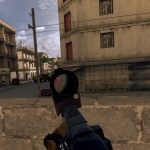
Facebook’s Oculus division has snatched up yet another popular virtual reality game developer. On Friday, the company announced it has acquired Downpour Interactive, the studio behind the hit multiplayer military simulator Onward.
“We’ve seen great success with Onward on the Oculus platform for several years — first on Rift and more recently on Quest,” Mike Verdu, Facebook’s VP of AR / VR content, said in a blog post. “Becoming part of the Oculus Studios family will give Downpour Interactive the opportunity to cultivate both the Onward community with the full support of Oculus Studios resources, and, in the future, pursue other projects.”
Everyone from Downpour Interactive will move over to the Oculus Studios team “in some capacity,” Verdu said. He also confirmed that Onward will still be supported on all of the platforms where it’s currently available: the Oculus Rift, Oculus Quest, and Steam.
Dante Buckley, founder and CEO of Downpour Interactive, said in an FAQ on the studio’s website that Onward’s feature roadmap “remains unchanged” and that the studio plans to “accelerate the speed of our development” because of the acquisition. Downpour Interactive will also continue to retain “full control of all development,” he said.
We are excited to announce that Downpour Interactive is joining Oculus Studios. We know you have questions and we have built an FAQ to help answer them. For more details, including a message from our founder Dante, visit our website at https://t.co/fJCke9C8R5 pic.twitter.com/5Kub7kfpVc
— Downpour Interactive (@DownpourInt)
The acquisition is Facebook’s latest to beef up Oculus Studios. The company bought Beat Saber developer Beat Games in November 2019, Asgard’s Wrath maker Sanzaru Games in February 2020, and Lone Echo creator Ready at Dawn in June 2020.
The post Facebook acquires the developers of VR military simulator Onward, appeared first on NEWDAWN Blog.
Google is cracking down on scammy Play Store app listings, Jon Porter

 An example of the kind of listing that will be prohibited under the new policy. | Image: Google
An example of the kind of listing that will be prohibited under the new policy. | Image: GoogleGoogle has announced new Play Store policies and guidelines designed to make app listings more succinct, accurate, and less of an eyesore. New guidelines affecting the screenshots and videos meant to demonstrate an app’s features and functionality will come into force in the second half of 2021, while specific details about the enforcement of new policies for app titles, icons, and descriptions are coming “later this year.”
The new app metadata policies will ban a variety of tricks that app developers use to make their app listings excessively eye-catching. Writing words in all-caps will no longer be allowed unless it’s the name of a brand, and neither will including emoji in app names. App titles will be limited to 30 characters, and…
The post Google is cracking down on scammy Play Store app listings, Jon Porter appeared first on NEWDAWN Blog.
EU accuses Apple of App Store antitrust violations after Spotify complaint,
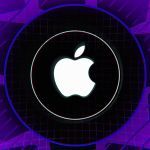
The European Commission is issuing antitrust charges against Apple over concerns about the company’s App Store practices. The Commission has found that Apple has broken EU competition rules with its App Store policies, following an initial complaint from Spotify back in 2019. Specifically, the Commission believes Apple has a “dominant position in the market for the distribution of music streaming apps through its App Store.”
The EU has focused on two rules that Apple imposes on developers: the mandatory use of Apple’s in-app purchase system (for which Apple charges a 30 percent cut), and a rule forbidding app developers to inform users of other purchasing options outside of apps. The Commission has found that the 30 percent commission fee, or “Apple tax” as it’s often referred to, has resulted in higher prices for consumers. “Most streaming providers passed this fee on to end users by raising prices,” according to the European Commission.
Our preliminary conclusion: @Apple is in breach of EU competition law. @AppleMusic compete with other music streaming services. But @Apple charges high commission fees on rivals in the App store & forbids them to inform of alternative subscription options. Consumers losing out.
— Margrethe Vestager (@vestager)
“Apple’s rules distort competition in the market for music streaming services by raising the costs of competing music streaming app developers,” says a statement from the EU. “This in turn leads to higher prices for consumers for their in-app music subscriptions on iOS devices.” The EU has also sent Apple a statement of objections, which is essentially a list of how the Commission believes Apple has violated competition rules.
This is the initial, formal stage of antitrust proceedings against Apple, and the company will have the chance to respond to the Commission’s list of objections. Apple faces a fine of up to 10 percent of its annual revenue if it’s found guilty of breaking EU rules, which could be as high as $27 billion based on Apple’s annual revenue of $274.5 billion last year. Apple could also be forced to change its business model, which has more damaging and lasting effects than a fine.
Spotify has welcomed the initial charges. “Ensuring the iOS platform operates fairly is an urgent task with far-reaching implications,” says Horacio Gutierrez, Spotify’s chief legal officer. “The European Commission’s statement of objections is a critical step toward holding Apple accountable for its anticompetitive behavior, ensuring meaningful choice for all consumers and a level playing field for app developers.”
Central to this entire case is what’s known as the “Apple tax,” the 30 percent cut that Apple takes on subscriptions. Companies like Netflix and Spotify have long opposed this cut, but Apple has argued that the revenue contributes toward the costs of maintaining the App Store and enforcing its various content, privacy, and security policies.
Spotify previously claimed that Apple uses its App Store to stifle innovation and limit consumer choice in favor of its own Apple Music service. That complaint was followed up with a similar one by Rakuten, alleging that it’s anti-competitive for Apple to take a 30 percent commission on ebooks sold through the App Store while promoting its own Apple Books service.
Epic Games also joined many developers and companies opposing Apple’s App Store policies, and filed an antitrust complaint with the EU earlier this year. It’s part of an ongoing dispute with Apple, after the Fortnite developer publicly criticized Apple’s App Store policies around distribution and payments. This resulted in Epic attempting to circumvent Apple’s 30 percent cut on in-app purchases in Fortnite, and Apple quickly removing the game from its App Store.
Apple has eased some of its policies over the past year, as the pushback against the App Store grows louder. Apple now lets some video streaming apps bypass the App Store cut, and it has reduced its App Store commission rate to 15 percent for any developer that earns less than $1 million in annual revenue.
The post EU accuses Apple of App Store antitrust violations after Spotify complaint, appeared first on NEWDAWN Blog.
EU accuses Apple of App Store antitrust violations after Spotify complaint, Tom Warren
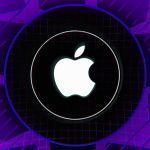
 Illustration by Alex Castro / The Verge
Illustration by Alex Castro / The VergeThe European Commission is issuing antitrust charges against Apple over concerns about the company’s App Store practices. The Commission has found that Apple has broken EU competition rules with its App Store policies, following an initial complaint from Spotify back in 2019. Specifically, the Commission believes Apple has a “dominant position in the market for the distribution of music streaming apps through its App Store.”
The EU has focused on two rules that Apple imposes on developers: the mandatory use of Apple’s in-app purchase system (for which Apple charges a 30 percent cut), and a rule forbidding app developers to inform users of other purchasing options outside of apps. The Commission has found that the 30 percent commission…
The post EU accuses Apple of App Store antitrust violations after Spotify complaint, Tom Warren appeared first on NEWDAWN Blog.



